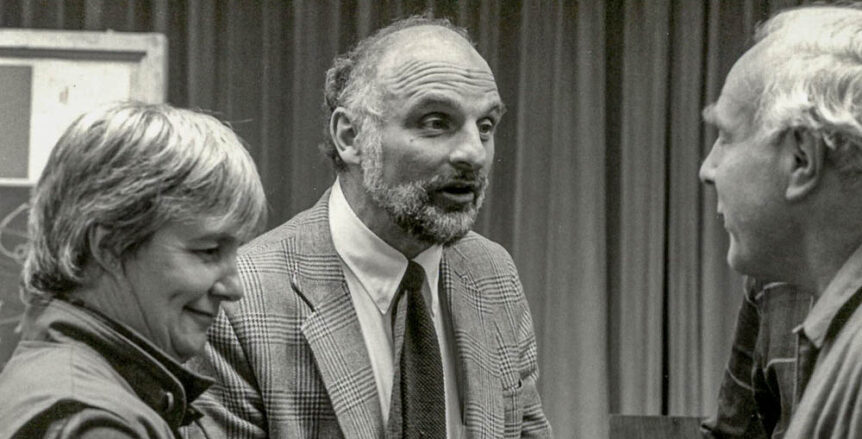
As the 70th anniversary of the sisters’ arrival in Wisconsin is celebrated this year, it is important to share the history and culture of the Benedictine Women of Madison. What brought the sisters to this area? What influences shaped the mission, vision and values? Who played key roles in what eventually became Holy Wisdom Monastery?
Highlights* of the growth, change, and stability of the Benedictine Women of Madison will be reviewed in the weeks leading up to the 70th Anniversary Celebration on July 9.
*These highlights only reflect the history of the sisters after their move to Madison in 1953.
In this issue, the focus is on the 1980s. The sisters began exploring new forms of monastic community in the 1980s – the ecumenical Community of Benedict (1980-2013), The Resident Program (1986-1989) and the intentional Christian Bingen Monastic Community (1988-1992). The sisters called these 10 years: Community for the 80s.
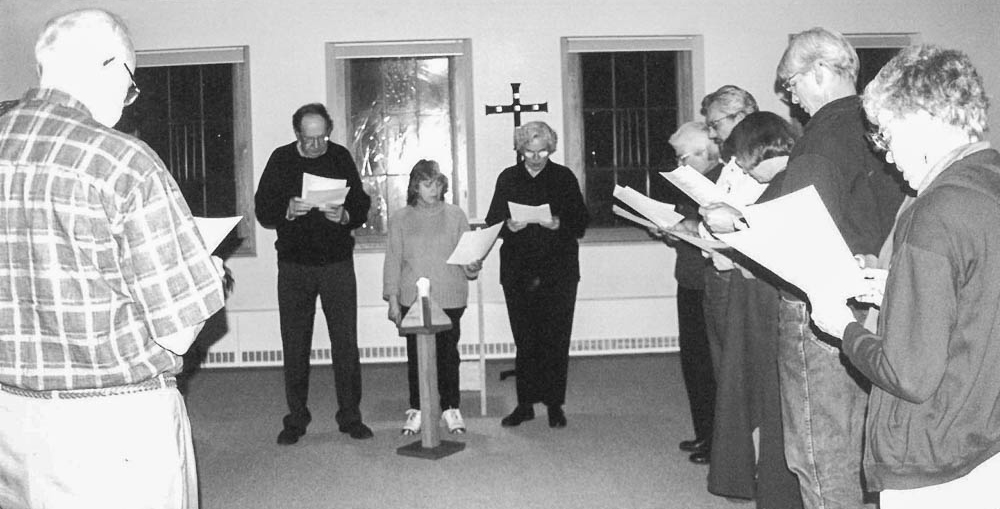
1980
- During a weekend in April, Sisters Mary David Walgenbach and Joanne Kollasch began a dialogue with a diverse group of Christian friends to share experiences, ideas and dreams for building community in the 1980s. At the conclusion of the weekend, the sisters called together a core group composed of Al Heggen, George Hinger and John Conway to formulate with them the vision that would become the Community of Benedict. Sister Joanne recalls that this core group determined that the sisters would be one of the many households that would make up the Community of Benedict. Christ would be the center. Leadership would be rotated from one household to another. They invited others to explore life in the Community of Benedict and self-select whether they wished to join.
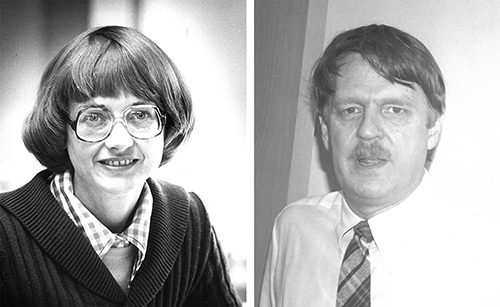
- Reverend Al Heggen (his wife Joanne Heggen joined the staff in 1978, both are pictured above) was hired in June as the planning and process consultant, a resource person for St. Benedict Center programs and to the sister’s council regarding development of networks of people and organizations interested in community building. Joanne and Al left the staff of St. Benedict Center in August of 1988 to join the pastoral staff of Mt. Hope Lutheran Church in West Allis, Wisconsin.
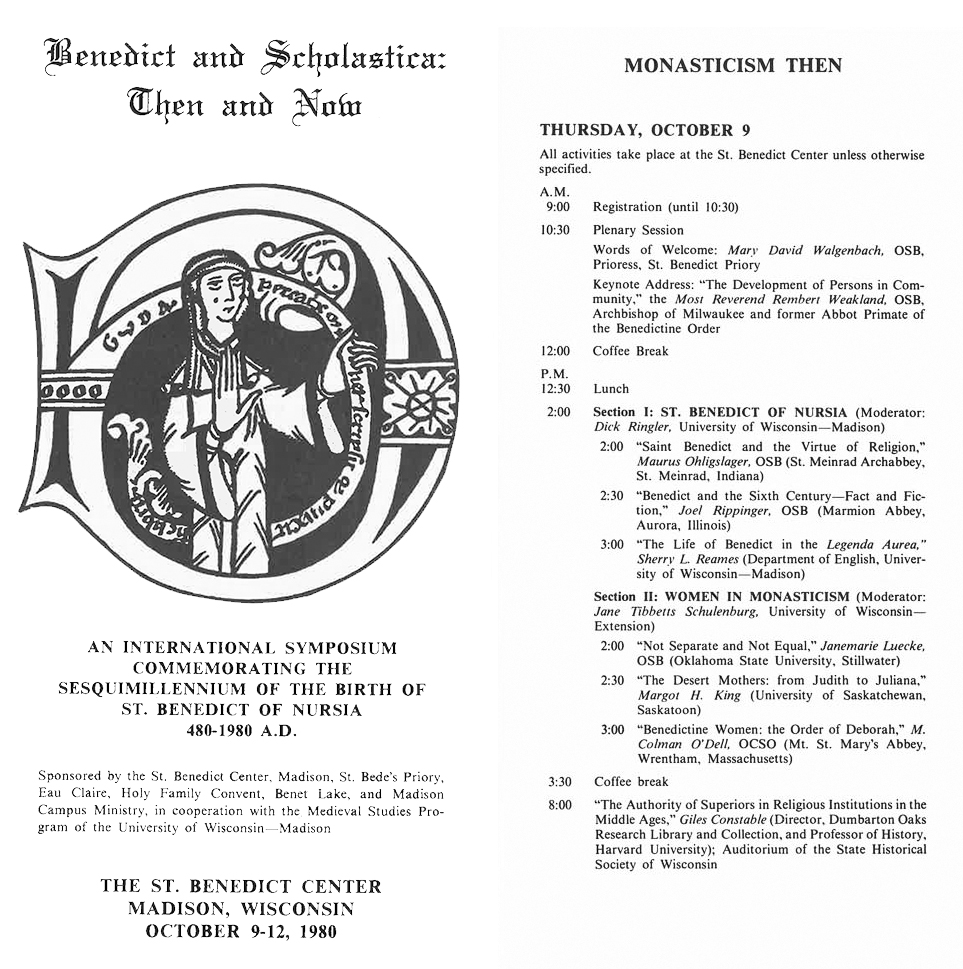
- From October 9-12, more than 200 women and men attended a symposium celebrating the sesquimillennium (1500th anniversary) of the birth of St. Benedict of Nursia. The symposium, entitled Benedict and Scholastica: Then and Now, was sponsored by the three Benedictine women’s communities in Wisconsin (St. Benedict’s in Madison, Holy Family Convent in Benet Lake, and St. Bede’s Priory in Eau Claire), in cooperation with the University of Wisconsin Medieval Studies Program.
- The program emphasized the importance of St. Benedict’s rule for monastic life, which laid the foundations upon which Christian monasticism had flourished in Western Europe and the New World. The inclusion of St. Scholastica, Benedict’s sister in both flesh and spirit, in the title of the program stressed the important role of women in monasticism.
- Presentations ranged from the historical and cultural background of monasticism in Western Europe to the contemporary theological and spiritual dimension of Western monasticism. Presenters included Benedictine scholars: Joan Chittister, OSB of the Benedictine Sisters of Erie, PA; Demetrius Dumm, OSB, of St. Vincent Archabbey; Mary Collins, OSB, of the Catholic University of America; Giles Constable, professor of history at Harvard University; and Jean Leclerq, OSB, of the Benedictine Abbey of Clervaus in Luxembourg.
- The symposium also featured a display of contemporary monastic arts and crafts and a concert of monastic music through the ages.
1981
- In May, Sister Mary David was elected to a second four-year term as prioress.
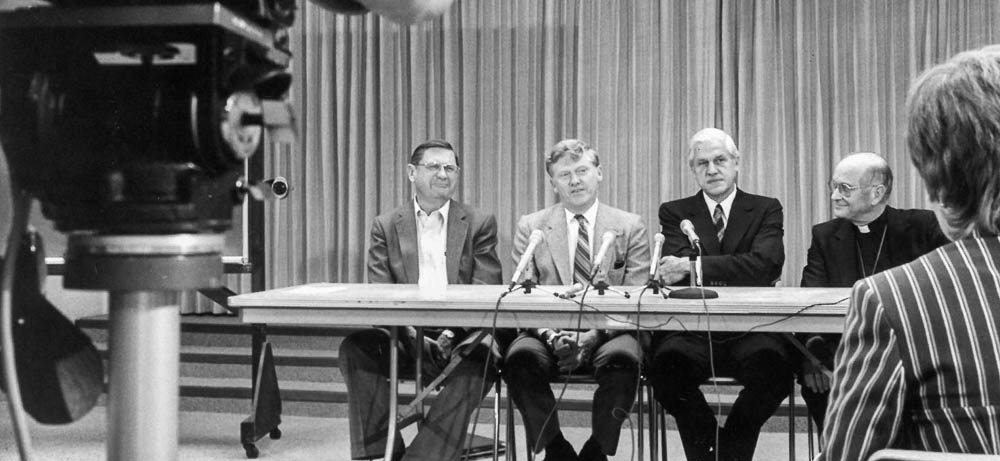
1982
- The sisters hosted the historic meeting of the 70-member Commission for a New Lutheran Church at St. Benedict Center in December (pictured above). The Commission’s task was to meld the American Lutheran Church, the Lutheran Church in America, and the Association of Evangelical Lutheran Churches into one Lutheran body.

1983
- Sunday Assembly (pictured above) became the official name of the sisters’ worshipping community. The sisters consistently invited people to join their community in the Liturgy of the Hours (daily prayer), and there were always a small number of people who participated. After the Second Vatican Council, and with the advent of St. Benedict Center for Christian Unity, more people – guests at the Center and neighbors in the surrounding area – participated in the community’s prayer and worship.
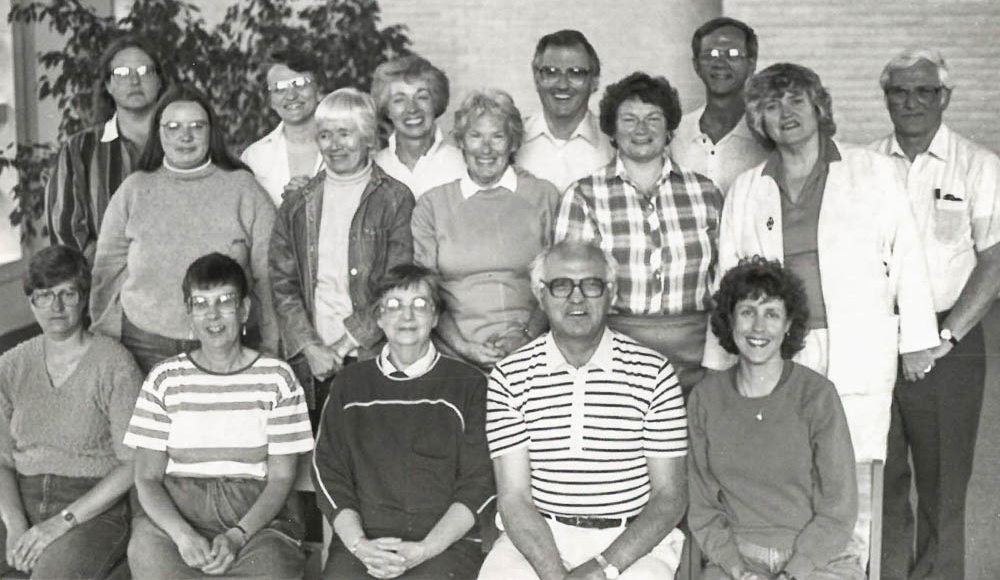
1985
- In May, Sister Mary David was elected to a third four-year term as prioress.
- In August, following an invitation from Sisters Joanne and Mary David in 1985, Sally and Parker Palmer from Pendle Hill arrived at St. Benedict Center to live and work. Pendle Hill was a Quaker adult study center and living-learning community near Philadelphia. The Palmer’s were attracted to the sisters’ vision of a new ecumenical monastic community. They hoped to explore with the sisters the possibility of a residential community. This would become known as The Resident Program and would be a center for study, reflection and renewal in which people could share the community’s life for three, six, or nine-month periods. ‘Students’ could be of all ages and backgrounds, married or single, with or without dependent children.
1986
- Neal Smith was hired as the director of asset management in July. He brought an impressive array of gifts and skills to the monastery. Educated at the University of Wisconsin with a degree in business administration, Neal was accomplished in accounting, construction, development, finance, sales, manufacturing and more. Neal’s history with the sisters started in 1973 when he was introduced to Sister Mary David, who took him horseback riding. The sisters became one of Neal’s clients while he worked part time at a CPA firm while attending college.
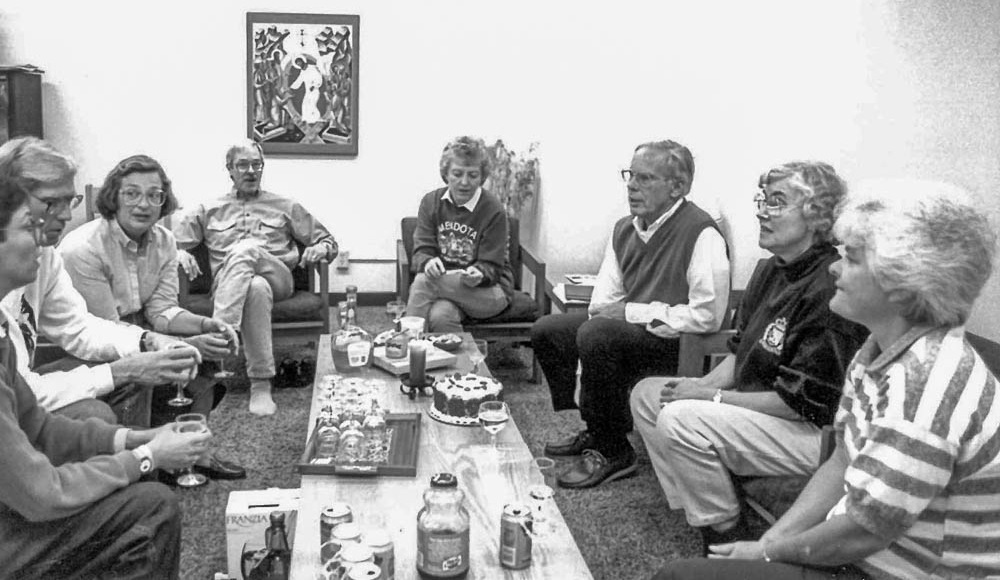
- Discussions regarding the Community of Benedict (pictured above) had continued. When membership in the community coalesced, a covenant was written which included the statement: “We are a group of persons from different religious traditions, living in different places, of different ages, sexes, marital status and family commitments. We believe that God is calling us and others to create an environment conducive to the awareness of God’s presence in ourselves, in one another, and in the sacredness of creation. We commit ourselves to be in community with one another, so that we might be empowered to live out our vocations within the places where we live and work. We seek a simple and integrated life as a sign of God’s peace in our fragmented world.”
- For 32 years the Community of Benedict thrived, but as members moved away or were unable to attend because of poor health or aging, the remaining members decided it was time to end the group. In December of 2013, the Community of Benedict held a closing ritual.
1987
- The first term of The Resident Program began on October 3 with 15 women and men enrolled. They ranged in age from their early twenties to their late sixties and came from Arkansas, New York, North Carolina, North Dakota, Wisconsin and Finland. Their religious affiliations were just as diverse – Lutheran, Episcopalian, Quaker, Methodist and Roman Catholic. The curriculum included studies in spirituality, scripture, peace and justice. Students and community members would join in study and worship, physical work, community meetings and common meals.
- The sisters purchased a home which bordered their acreage. They named it Bingen House.
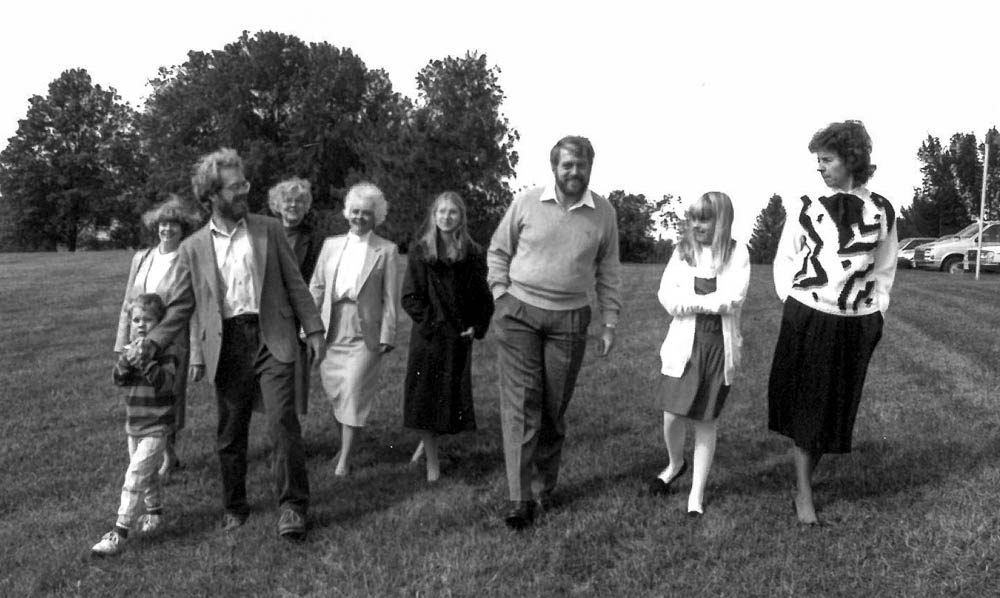
1988
- The sisters continued their experimentation with new forms of monastic community. The Bingen Monastic Community (pictured above, Neal Smith in center) grew out of this experimentation. It was an intentional Christian community of women and men with varied lifestyles. Lifestyle changes for Bingen members led to conversations about the feasibility of the community’s future.
- Bingen members decided to dissolve the community in September of 1992.
1989
- The Resident Program was discontinued in the spring. As the community and the program progressed, it became apparent that the Palmers’ vision of the new ecumenical community differed from the sisters’ vision. With the help of a consultant and dialogue the two visions were articulated – the Palmers viewed the school as the main focus and the community secondary, whereas the sisters saw the community as the focus and the school as secondary,
- In June, Sister Joanne Kollasch was elected to a four-year term as prioress.
- Neal Smith was appointed director of administration and eventually executive director of the monastery, responsible directly to the Sisters’ Council. He was a member of the National Association for Treasurers of Religious Institutes at a time when few non-religious served as community treasurers. The sisters recognized Neal’s abilities and offered his skills to the Federation of St. Gertrude as a consultant to the Finance Committee, a position to held from 1993 to 2010.
- Neal’s presence touched nearly every aspect of the monastery’s life. His work was integral to the sisters’ accomplishments, especially in caring for the land and the construction of the new building, Holy Wisdom Monastery. Neal retired in June 2011 but continued as the sister’s financial consultant for many years.
Some of the more notable speakers who either led or participated in programs at St. Benedict Center in the 1980s included Thea Bowman, Franciscan Sisters of Perpetual Adoration (FSPA), Dr. Walter Brueggemann, Evelyn and James Whitehead, James Finley, Eugene La Verdiere, Congregation of the Blessed Sacrament (SSS) and Henri Nouwen.
Dr. Walter Brueggemann 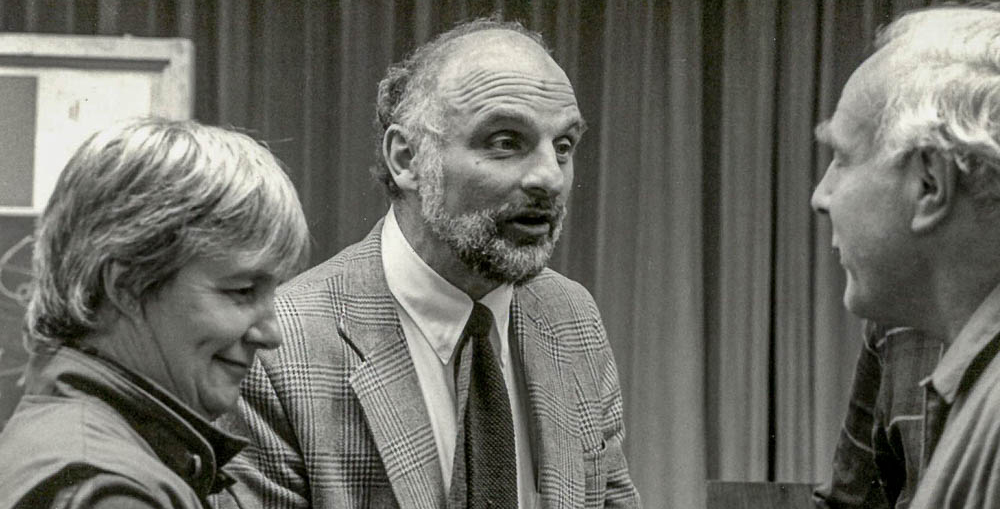
Thea Bowman 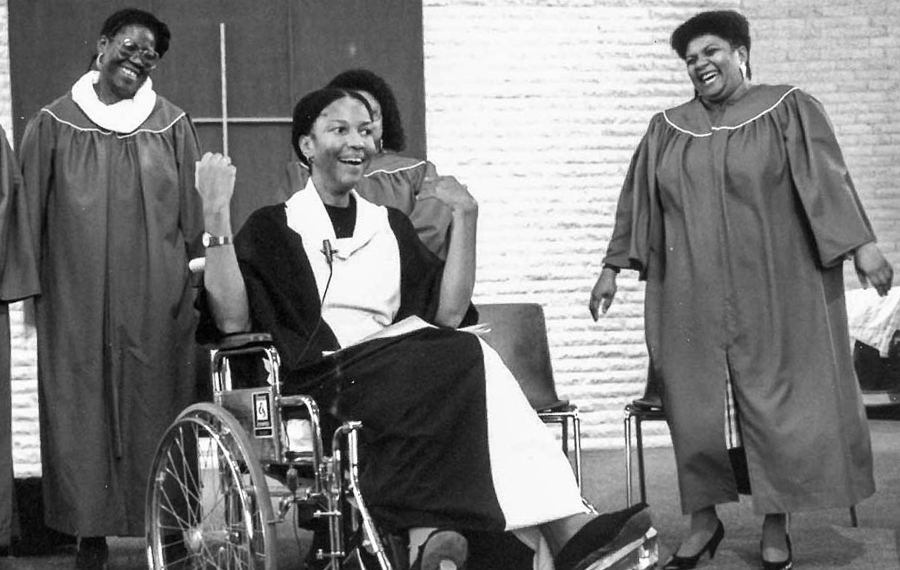
Henri Nouwen 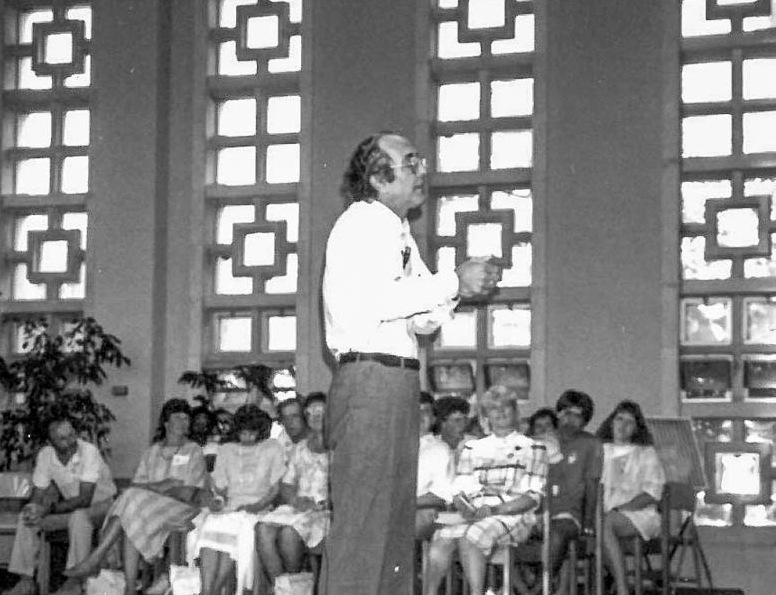
What’s coming up?
Next week the focus will be on the 1990s. As they had in the 1960s, the sisters focused on examining their future, their place in society and how they as a community would continue to seek God. They had engaged in 10 years of experimentation with various forms of ecumenical communities in the 1980s. These experiences prompted the question: how will our community move into the 21st century?


